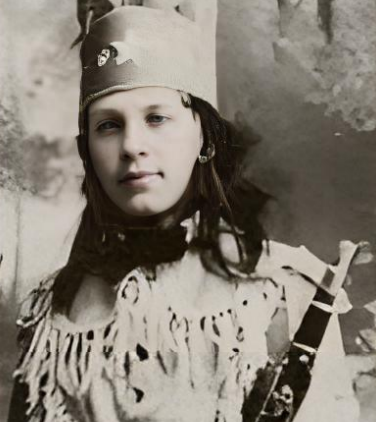LONGSTREET SCHOOL 1870-1908
Indiana Chapter 5
INTRO EUROPE GERMANY OHIO INDIANA SOUTH DAKOTA NEW MEXICO KANSAS DEEPER LOOKS BOOK
Outline of Locke School, another in the Elkhart County Township of the same name that Longstreet School was in. Built in the same time period, the designs were likely very similar of the same.
Often misunderstood; Mennonites always believed in education
Founded in 1894, Goshen College was begun in the county as Elkhart Institute of Science, Industry and the Arts. It was a private preparatory school to provide the opportunity for Mennonites to further their education past public schools.
Two generations of Link children attended Longstreet School, a grammar school in Elkhart County, Locke Township, IN. The school was to the northeast of the original Link family farm.
According to daughter Edna Frances Link, Charles Ulysses Link had mostly fond recollections of those school days. Many years later, some of his memories were recorded in the Wakarusa Sun newspaper on the occasion of a class reunion being held in 1937. Charles was unable to make the journey home, but wrote back from South Dakota where Charles and Clara had a farm at the time.
"There were eighty-four scholars in our school, and it was quite a job for the teacher to keep the best of order, and there were about eighteen of us big boys and rather mean ones so it became necessary for the trustee to get a teacher that could straighten us out.
“He found a teacher ... who could handle it. It gives me a chill yet when I think of him, but he learned me to think fast anyway ..."
- Charles Ulysses Link
Oscar Link with his muscial weapon of choice the flugel horn. The Link family was very enthusiastic about music, and Charles taught music as an occupation while living in Nappanee, IN.
However, more than scholarly pursuit was on Charles’ mind in those school days. Such was the importance of music to Charles, that he recalled with interesting detail some of the musical activites of a sometimes unruly mix of older boys. After briefly reflecting in his letter home about baseball at Longstreet, Charles was immediately brought to the topic of deepest interest to him:
"Ed and Isaac Doering were good (baseball) players we learned, and we soon had them in our nine, and then we really thought we had a team.
"We also learned that Ed was a band leader and we soon organized a band. That band put pep in the whole community. Longstreet was put on the map. It was very amusing on our practice nights as you could hear those horns and drums in every direction going to practice. Most of the members came from the north and east.
"You could hear Herman Bringolf tooting his second base, and as he came by the Freed boys, Joe joined with his tenor. Elmer with his cor[o]net, and finally Henry with his tenor or snare drum, so as they came by Doerings, Isaac joined with the bass and Ed of course did not need practice and from the east you could hear Joe Lechlitner, George Miller, Dan Delcamp, Jacob Myers, and Henry Lechlitner with their tenors, altos, cor[o]nets, and the east crowd had the bass drum, played by John Myers. From the south there was only Lost Link with his little clarinet.
“There was also one from the west that was Wes Lockwood with his baritone, and could that fellow play! He could make that horn crack so loud one would think he would burst it. Now imagine all these boys playing on the way to practice, but when we got to Ed's, work began. I forgot to tell you that Noah Lehman was our best debater in school. He was gifted with plenty of wind power but Noah would not join the band. He was too busy on band practice nights practicing selling cattle, horses, hogs, and sheep, getting ready for public sales, and he took his father's barnyard for the practice.”
- Charles Ulysses Link
Longstreet School, class of 1896.
Charles' children also attended Longstreet School
From the farm of their grandparents and parents, Forest and Edna walked about a mile and a half to the same one-room Longstreet school their parents had attended. Longstreet was once a frame affair, but was built of brick on the exterior in its second generation. Forest’s sister Edna, who was born two years after he was, enjoyed his company on their walks. They both enjoyed school.
Edna recalls Forest as “mischievous” at times, and that he liked to sing as his father long had. The entire family was known for enjoying music, or being “choristers.” Forest learned to play the clarinet as his father had. About that mischievousness, "If Miss Kantz (the teacher) left the room, he quickly got to the front," Edna recalled, "and threw his index fingers out of joint by wiggling them, or wiggled his ears, or even turned a handspring," she said.
Forest Elmer Link, from class photograph.
“His seat was right in front, and he always managed to get back and busy at work when she returned. But the other children were snickering, and I didn't really know if I should be proud or worried about him.”
- Edna Frances Link (Jones)
Forest Link in Pratt (KS) City Band uniform.
A very social and public life
Forest turned his love of being in front of others into an active social and public life. That included performing in the Pratt County (KS) City Band when he was in his 20s. The band was large, and appropriated a stylized version of Native American dress as their band uniforms.
Forest went on to become Pratt County bond chairman during World War II, Pratt county clerk, served as state president of the Kansas Benevolent and Protective Order of the Elks (known popularly as “the Elk's Club”) and was elected a Kansas District Governor of the Lions Club.
Forest, and his son Ned, were among founding members of the Pratt Lion’s Club. 75 years later, Ned would be honored by the Lions International president as a “Beacon of Hope” in 2011. Ned was 96 at the time, and went on to 99-and-a-half years, likely the longest surviving Lions Club member in the world at that time.
McMasters “Tonograph” piano scale guide used by Link family musicians.
A later generation at Longstreet, 1908
Carl Nunemaker, grandfather of Lowell Nunemaker*, and Bertha Harter, Lowell Nunemaker's maternal grandmother, are pictured with students in the Longstreet class of 1908. The Nunemaker family and Link family shared lineage running through the Berkey family, Charles’ wife’s maiden name (Clara Berkey [Link]).
**Lowell and Ginny Nunemaker contributed greatly to the gathering of much information made available on this site and in the publication,
“A Mennonite Family in Northern Indiana.”







